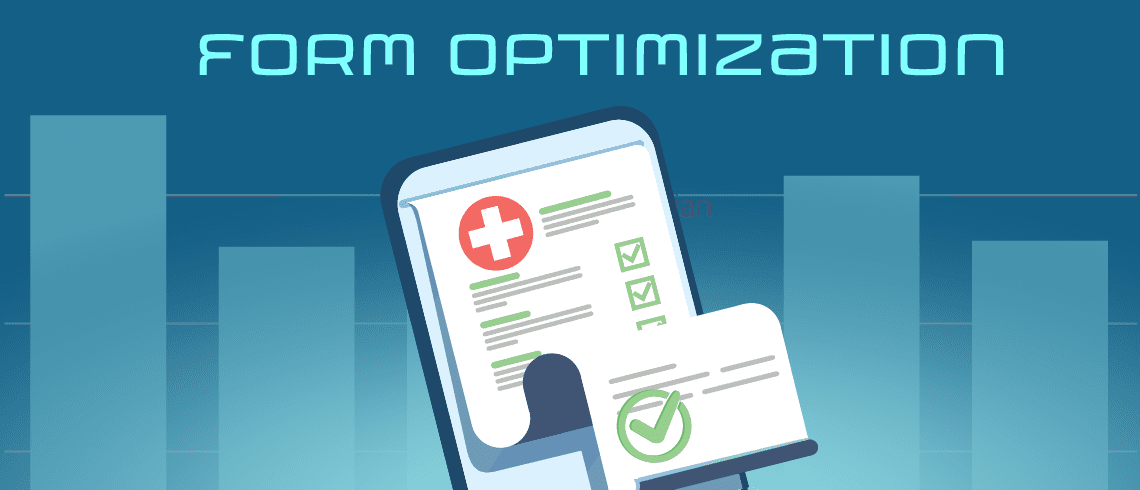NOTE: This article is originally from December 2020. It got lost in the holiday season, but has some great insight into form length based on our real-world data, so I have bubbled it up again. Spoiler alert: If you provide high-quality, engaging and personalized content like our HRAs, adding a few more required fields to a contact form does not ruin completion rates.
We often discuss with clients the importance of balancing a knee-jerk desire for requiring “higher” levels of identifiable contact information with providing the best user experience in the HRAs. Consequently, this prompted us to do some research about number of required fields and average completion rates.
There is a lot more to this than maybe there appears to be on the surface. Yes, there is LOTS of research online that reinforces one’s common sense that in general, fewer required fields is better for completion rates.
But it is absolutely not that cut-and-dried. To help illuminate the deeper story for our products, Michael Venske, one of our fantastic Client Success Team members, pulled data from the first 6 months of this year. He and I have put our thinking caps on to suss out insights from it.
Note that these stats are collective for all of our assessments. The stats for each individual assessment for different disease states will vary from these stats, some more than others. This deviation would likely follow the psychographic characteristics of each condition. The relative impact of the different quality of life aspects of symptoms, mortality rates, etc. will change how motivated users are to complete certain assessments over others. For example, maybe sleep issues seem less pressing than understanding your risk of having a stroke, so a user will tolerate fewer fields on a contact form before they abandon.
Assumptions
Before we get too far in, let’s first discuss some assumptions that will frame this discussion.
- The immediate experience of a user completing an HRA is valuable, just by itself. To that end, you want to be sure you are not impeding that if you can help it. Users will often follow the clickable calls-to-action on the last screen, which is ultimately the goal. You want to pull them into a defined, personalized, care pathway that generates revenue and meets their healthcare needs.
- The secondary objective is to make longer-term use of that completion experience, to nurture and ultimately convert those who did not originally convert, either for this service line or another. That is most easily accomplished by adding the HRA user data into your CRM for future use.
- To do that, you have to collect enough contact info to uniquely identify them in your CRM, which is more than 3 fields. Each CRM is different in which fields are needed to insure that, so you don’t typically have a choice on the minimum. This research is intended to help you decide if you should require additional fields on top of those that your CRM needs. Because we consider this to be a best practice for the majority of our clients, and no common CRM will match on 3 or fewer fields, we won’t be addressing that much.
- We are looking at this data for the most common use of our HRAs, which is lead generation, so we will assume that requiring 9 or more fields does not fit that use profile. Some clients do use the assessments in the clinical care pathway, or for other very specialized uses, where you can get away with more required fields from captive audiences.
- This data is for required field count, not total field count, which can be a mix of required and optional fields. To try to account for that variability is beyond the scope of this research, but we may tackle it in the future.
- Completion rate vs. total completions is important. “Broader” targeting typically produces more total completions at the expense of completion rate. But this is a continuum and “broader” is relative.
- The last assumption is that there are things you can do to improve completion rates outside of total required fields, especially in the areas of targeting and messaging. Spoiler Alert: As you will see later, this is VERY important.
Scope
So our practical exploration is actually fairly narrow. We are really looking to help our clients answer just a few questions so they can determine the number of required fields that works for them.
- If we do not have a CRM, how does total required fields impact completion rate expectations?
- If our CRM requires less than 7 fields, how does adding more impact completion rate expectations?
- If our CRM requires 7 fields, how badly does that impact our completion rate expectations?
Data
Here is how the data shook out:
AVERAGE COMPLETION RATES (01/01/2020 to 06/30/2020) | ||
|---|---|---|
| All HRAs w/ > 100 Visits | All HRAs | % of Clients |
| 3 fields | 52% | 3% |
| 4 fields | 43% | 35% |
| 5 fields | 45% | 13% |
| 6 fields | 22% | 4% |
| 7 fields | 41% | 43% |
| 8 fields | 41% | 1% |
| Median | 42% | |
| Median w/ Early Email Collection | 45% | |
I have to say, this surprised me and ran counter to what I expected. First, there is a slight sweet spot at 5 fields. Second, the relative decay of percentage is MUCH smaller than what I expected. Over the years, it has been drilled into our heads that more fields = fewer completions. Our data shows there is more to the story.
However, here is one reason why this might be the case.
User Experience
With our V3 re-designs, we have done our best to make sure the HRAs are optimized for a great user experience. We looked at years of completion data to help us improve multiple aspects of the tools from UI, verbiage, length, etc. to produce the highest completion percentages without sacrificing depth and accuracy. We think the fact that the completion percentage is insulated from the impact of total required form fields proves we have been successful.
The last column is there to help you understand the relative sample size for each bucket. You can see that the majority of our clients use either 4 or 7 fields, as those are the requirements of the most popular CRMs. At those levels, performance is only 2 points different! Mathematically, 7 fields is 175% more than 4, but is 95% as effective. Mind blown. Yes, there is some impact, but to put that in perspective we have some clients using 4 fields that see ~75% completion rates, and others using 4 fields but getting ~30% completion rates.
So, if there is a 200% difference even at the same field count, to see an average impact of -5% is pretty minor, because clearly, other factors at work can influence completion rates by quite a bit more than that.
OTHER FACTORS THAT INFLUENCE COMPLETION RATE
Targeting
I know from our own marketing that the broader you target, the higher total conversions you may get, but at a lower completion percentage. Where to draw the line is often based on budget and available targeting metrics or even the targeting inherent in a particular channel. As our data represents a decent number and wide variety of client organizations, we think that the variability in targeting has been averaged out. But obviously, if you are focusing on improving completion rates, the more you can do to spend promotional dollars for the HRAs only on those most likely to want/need them will improve completion rates.
Messaging
The words, the voice/tone you use, the pictures and design elements you choose, all impact how motivated a user is to complete an assessment. Of course, you know this, but when you are busy, it is easy to skip A/B testing etc. A little effort can go a long way.
Quick Win
One thing our research did uncover, was that clients using our new Early Email Collection feature, which gathers a user’s email on the first page of questions, improved average completion rates from 42% to 46%. You can enable this feature in the Management Portal > Customization > HRA > Consumer Information, or message Client Support to enable for you.
Conclusion
- First, we must acknowledge that accommodating the requirements of your CRM is a must. You don’t even need to think about this.
- Second, because there is so much variability in the completion rates for the same required field counts, we can draw the conclusion that good old-fashion precision targeting and messaging can be used to increase completion rates.
- Lastly, when all of the HRAs are averaged out, it looks like the sweet spot is at 5 fields, but each HRA will have it’s own actual sweet spot. For clients without a CRM, be sure to ask the Client Success Team how to optimize this for your exact assessments.















 Thank you for your interest.
Thank you for your interest.